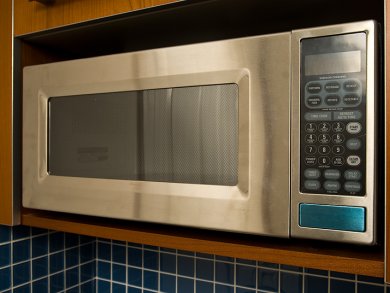One way to speed up the process of heating up your dinner is to use a microwave oven. Microwaves can be used to heat food in times that put conventional ovens to shame. But how do they do it?
Conventional cooking methods such as stove tops and ovens rely on conduction to heat food: Neighboring atoms pass thermal energy to each other until there is a constant temperature throughout. The thermal energy comes from an external source meaning this can be a slow process depending on the material that has to be heated. Each material, including food, has a different thermal capacity, or rate at which it absorbs heat. Ham, for example, has a heat capacity of 2.6 kJ/kg while tomatoes have a heat capacity of 3.98 kJ/kg — This is why tomatoes heat up quicker and retain their heat longer than ham.
Microwaves are quicker than conventional ovens as they essentially cook the food from the inside. Water molecules within the food are excited by microwave radiation. The molecules move and collide with each other, generating heat. This means there is no thermal gradient and no waiting for the heat to reach the center of the food – microwaves heat all parts of your dinner simultaneously!
- How water molecules help microwave ovens cook food so quickly
Video from ChemMatters




